Melbourne ACC In-House Counsel Day – Summary 2023
A compilation of the key messages we heard from some of the sessions at the Melbourne ACC In-House Legal Day.
15th Mar 2023

Managing Director
A compilation of the key messages we heard from some of the sessions at the Melbourne ACC In-House Legal Day.
The team at Dovetail: Andrew Murdoch, Sonia Cason, Imogen Spouse and Charlie Smirl, had the pleasure of sponsoring, attending and exhibiting at the Melbourne ACC In-House Counsel Day on the 9th of March.
Below is a compilation of the key messages we heard from some of the sessions at the event
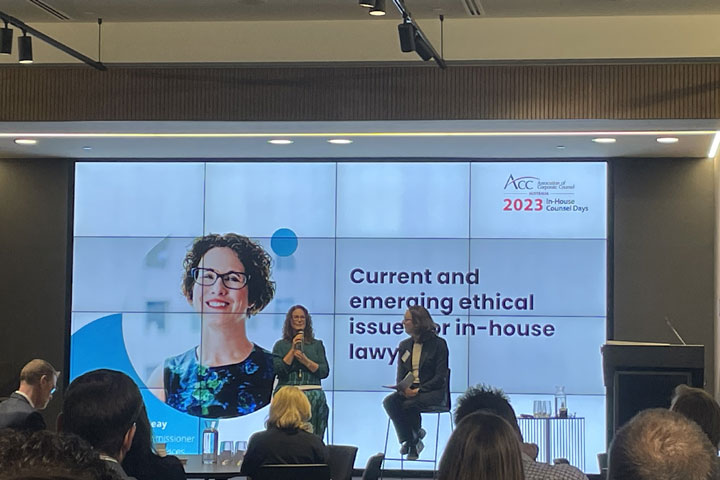
Commissioner Fiona McLeay – Victorian Legal Services
Emily Madder – Siemens Energy Pty Ltd
Lawyers are generally held to a higher moral standard than other professions and are responsible for upholding the law. Ethical lawyers support/drive more comprehensive public trust.
The Royal Commission into Crown unearthed unethical behaviour by both in-house counsel and law firms, which resulted in fines, strict regulation, plummeting share price, shattered reputation, and a shake-up of the executive.
(Chap 18 of the report – judgement on how lawyers at crown should’ve behaved)
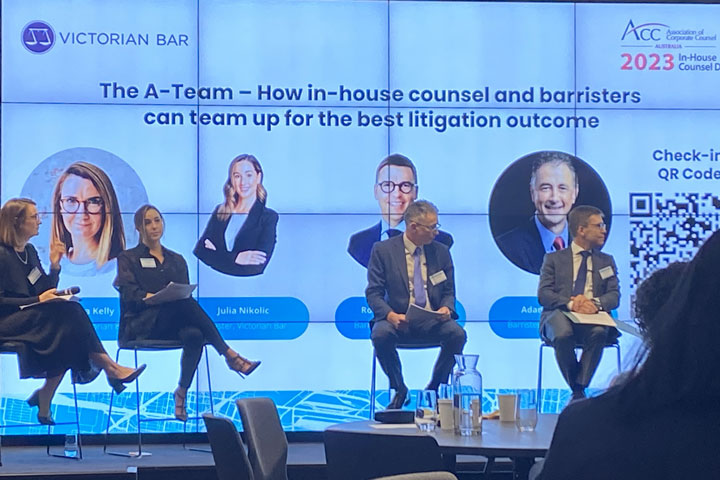
Robert Health KC – Victorian Bar
Rebecca Kelly – Victorian Bar
Julia Nikolic – Victorian Bar
Adam Rollnik – Victorian Bar
It doesn’t work in every situation, but when it does:
It’s never too early to brief a Barrister, as they can help resolve disputes early. If it does progress to litigation, they’ve helped you shape the strategy, which can ultimately reduce costs and produce the best possible outcome.

Katherine Biggs – Envato
Katherine King – Dazychain
Cathy Pappas – Telstra
Edwina Stevenson – Pernod Ricard Winemakers
The panel discussed their experiences implementing change, some in more confronting situations than others and how they successfully managed and led their organisation through those changes.
Cathy explained how Telstra has moved to an Agile Working Model, where the organisational structure is not around teams, e.g. Legal Team, Finance Team etc., but “chapters” and “missions”. These groups focus on outcomes, so the legal team is a chapter allocated to a mission.
Learnings:
Edwina discussed how the introduction of new French Laws around anti-bribery forced her business to shift its mindset completely.
Learnings:
Risk and compliance were significant pain points for people; the question concerned how you work risk and compliance into the operations and development.
Learnings:
The change will happen either way, so supporting people to be resilient, adaptable, and flexible is vital as a manager.
Kim Mackay – Holding Redlich
Here is the link to all 13 of ASIC’s key enforcement priorities for 2023; Kim focused on the three priorities that were most likely to impact in-house lawyers.
Sustainability and environmental factors are no longer considered fluff but something critical that investors look at to make decisions, so the accuracy of these claims is essential to ASIC.
Considerations for in-house counsel:
Example case: Sustainable + (Mercer) found misleading and deceptive conduct.
Every time ASIC investigates a company, they also explore the directors and leadership to see if individuals are caught up in the case.
Example cases:
New laws introduced in April 2021 around what’s considered unfair contract terms and non-compliance could result in fines of up to $50mil.
Considerations for in-house legal:
Internal investigations:
Once reported:
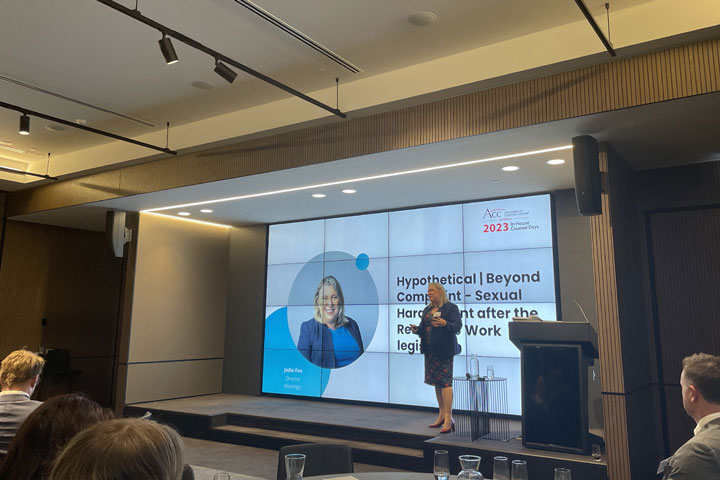
Jodie Fox – Worklogic
The Sexual Harassment National Inquiry Report (2020) provided vital recommendations and resulted in the Respect@Work legislation that enacted six recommendations.
Most recent legislation introduces “Positive duty to prevent sexual harassment”:
Considerations for in-house counsel:
Trauma-informed investigations:
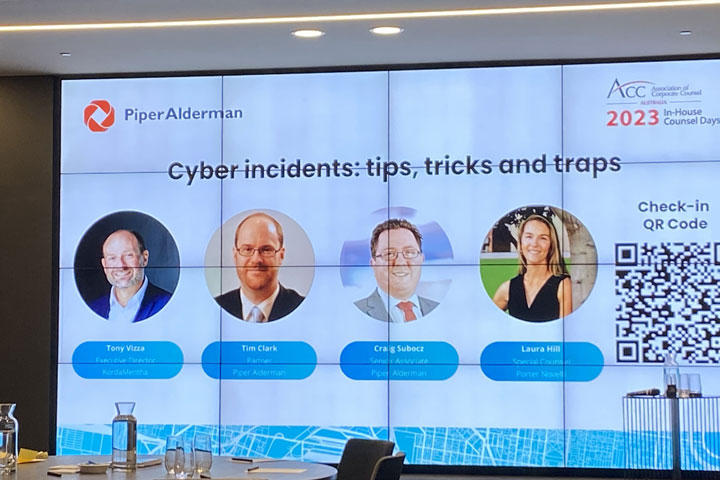
Currently front of mind for everyone
So much communication/content needs to be produced during a breach
Bespoke communication
Step back before going into crisis mode and do a human human-first act. When the waves part in a few days will,you be proud of your actions and how you managed your response
Staff and affected consumers approach first.
Cyber is NOT an IT problem.
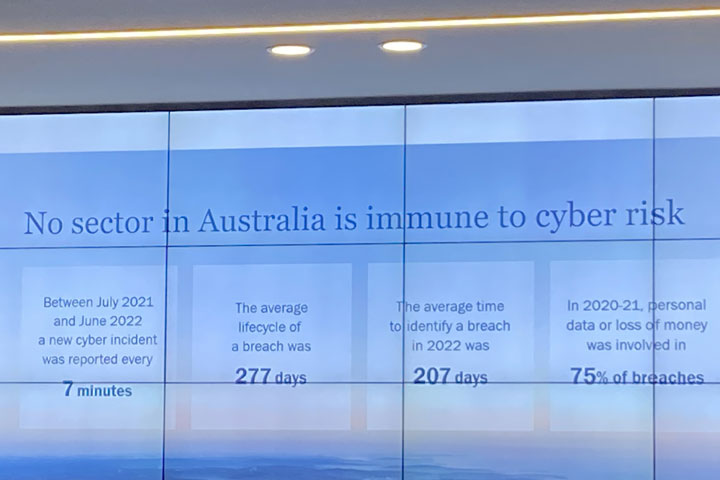
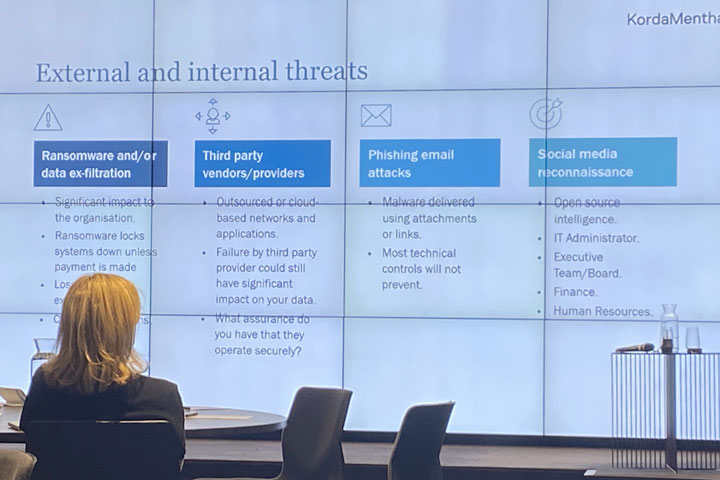

Latest insight
We acknowledge the Traditional Custodians of Country throughout Australia and their connections to land, sea and community. We pay our respect to their Elders past and present and extend that respect to all Aboriginal and Torres Strait Islander peoples today.


